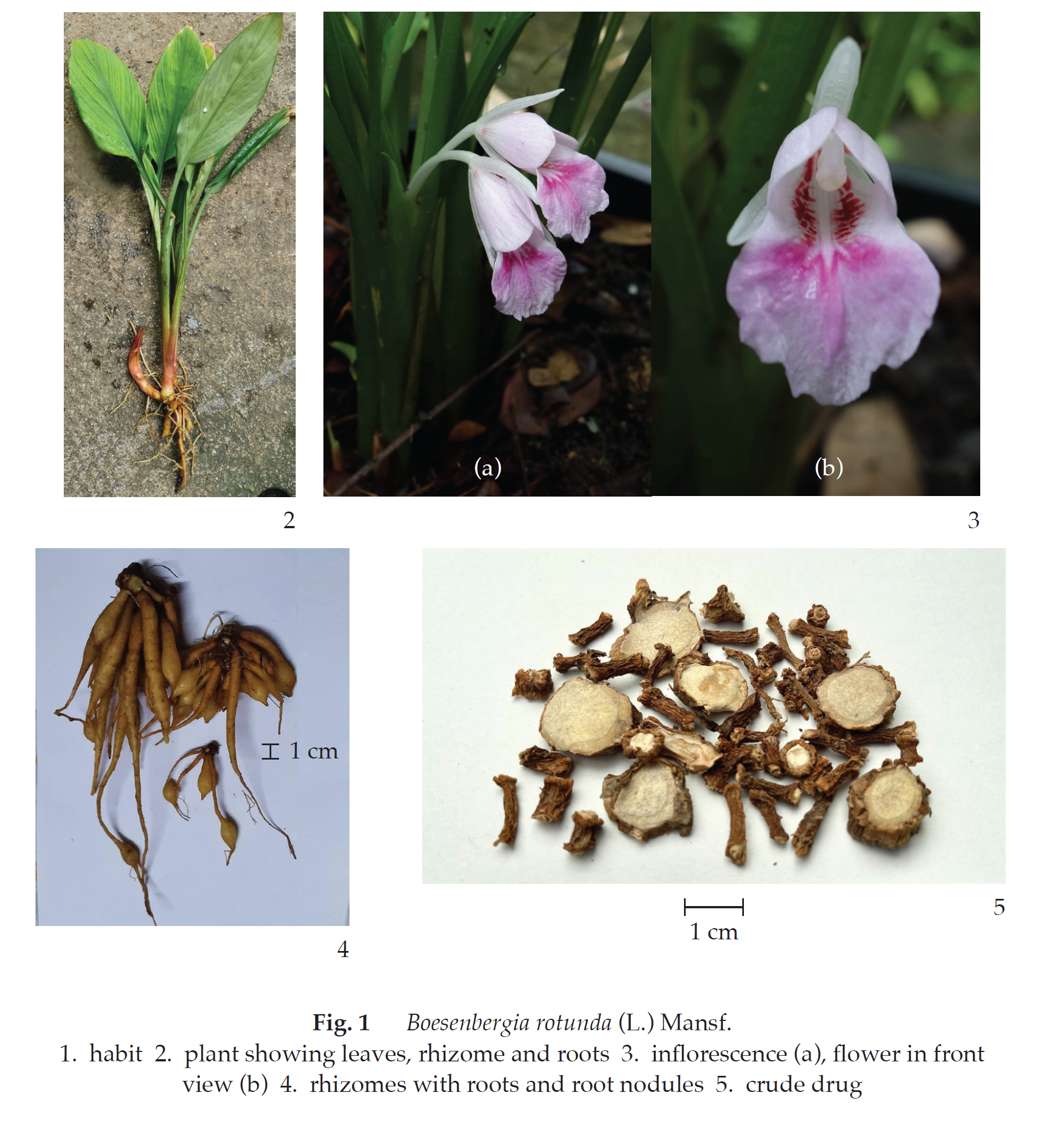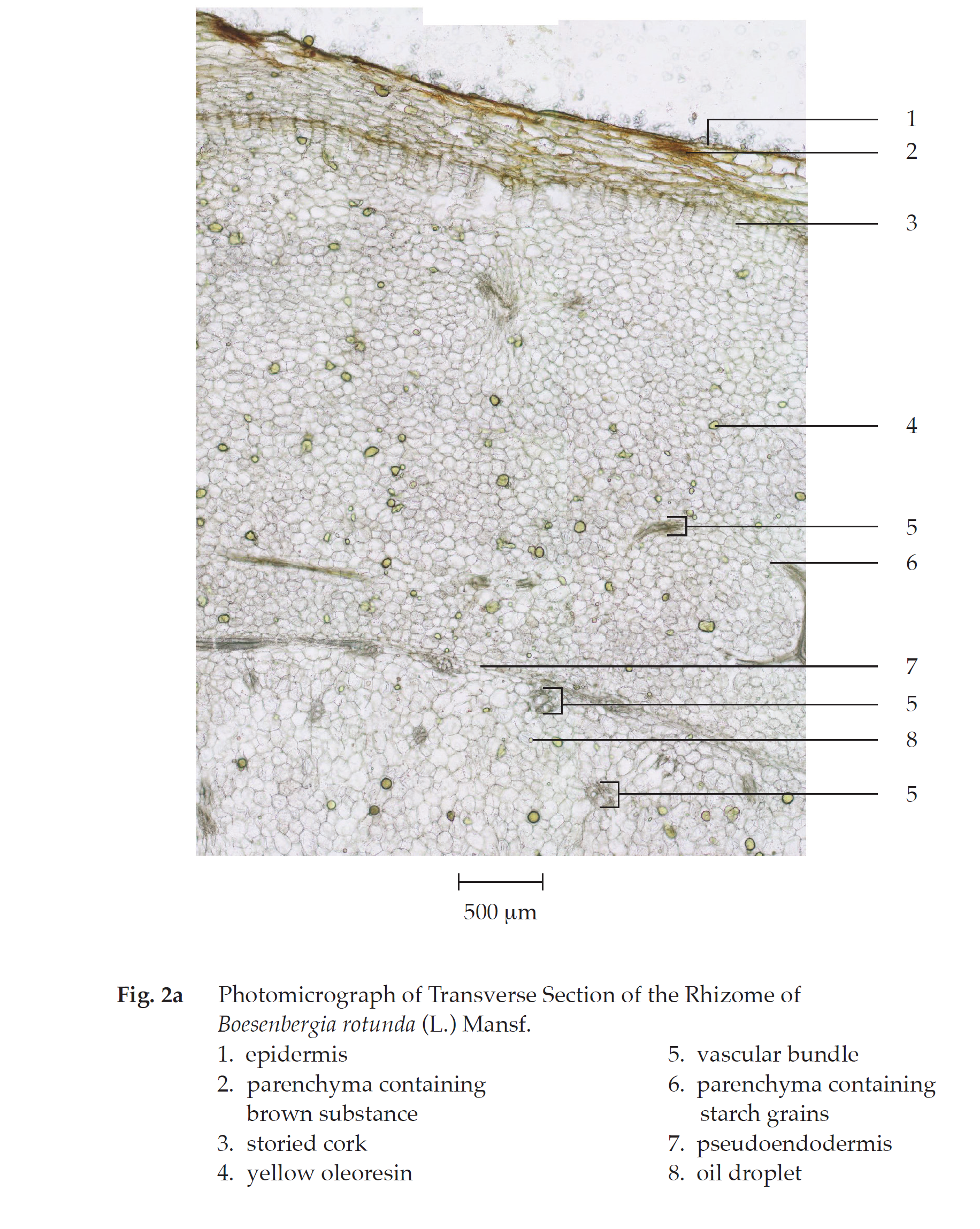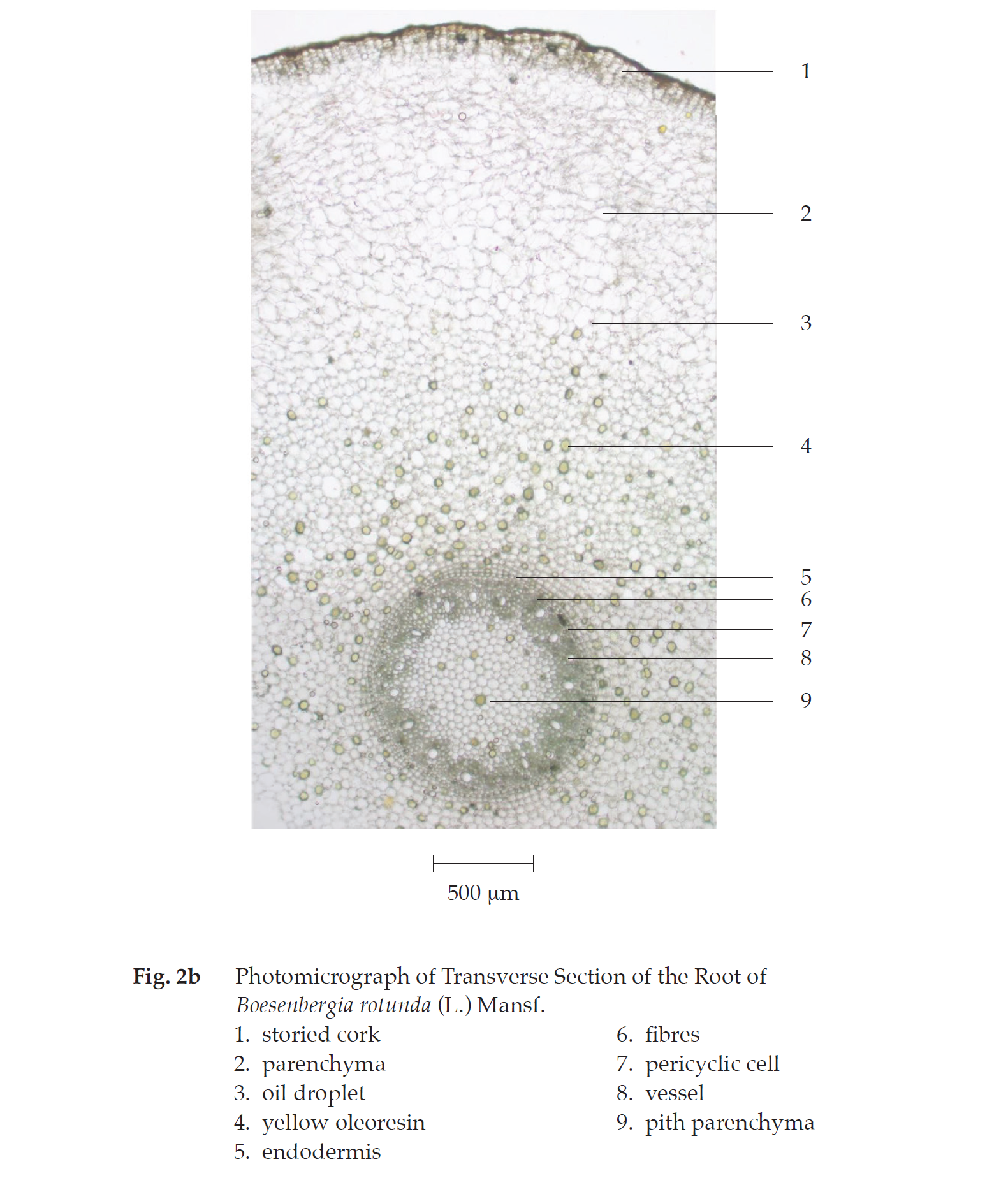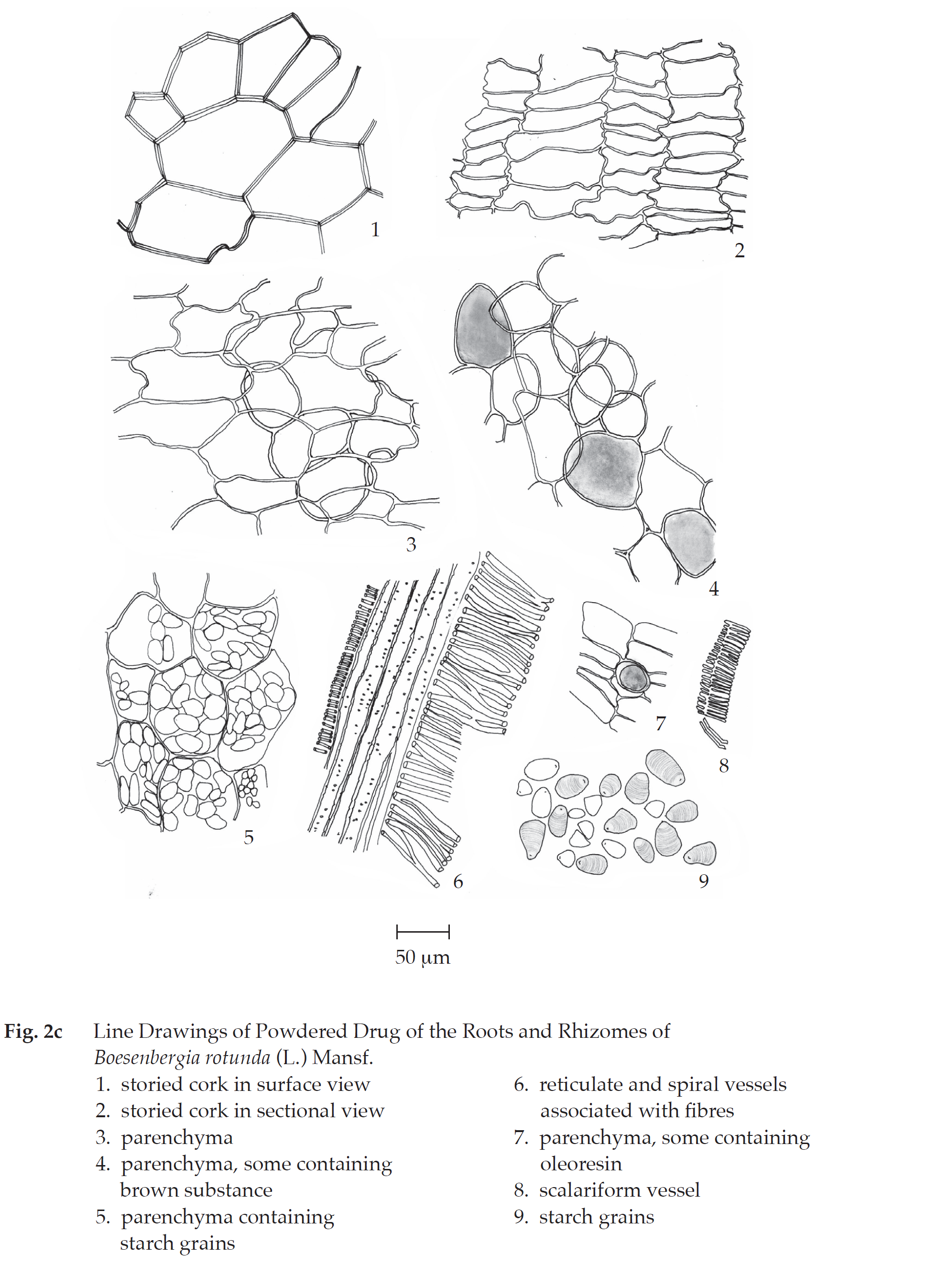ตำรามาตรฐานยาสมุนไพรไทย
Thai Herbal Pharmacopoeia
สำนักยาและวัตถุเสพติด กรมวิทยาศาสตร์การแพทย์ กระทรวงสาธารณสุข
Bureau of Drug and Narcotic, Department of Medical Sciences, Ministry of Public Health(Tinospora crispa (L.) Hook.f. & Thomson)
(Nelumbo nucifera Gaertn.)
(Centella asiatica (L.) Urb.)
(Centella Dry Extract)
(Centella Cream)
(Mesua ferrea L.)
(Piper sarmentosum Roxb.)
(Piper sarmentosum Roxb.)
(Pterocarpus santalinus L. f.)
(Santalum album L.)
(Senna tora (L.) Roxb.)
(Senna alata (L.) Roxb.)
(Senna Alata Tea)
(Piper retrofractum Vahl)
(Myristica fragrans Houtt)
(Andrographis paniculata (Burm. f.) Nees)
(Andrographis Capsules)
(Allium ascalonicum L.)
(Ocimum tenuiflorum L.)
(Curcuma longa L.)
(Turmeric Capsules)
(Turmeric Dry Extract)
(Turmeric Dry Extract Capsules)
(Arcangelisia flava (L.) Merr.)
(Curcuma sp.)
Harrisonia perforata (Blanco) Merr.
(Aristolochia pierrei Lecomte)
(Zingiber officinale Roscoe)
(Ginger Capsules)
(Ginger Tea)
(Cassia fistula L.)
(Nardostachys jatamansi (D. Don) DC.)
(Angelica sinensis (Oliv.) Diels)
Artemisia annua L.
(Ligusticum sinense Oliv. cv. Chuanxiong)
(Neopicrorhiza scrophulariiflora Pennell)
(Atractylodes lancea (Thunb.) DC.)
(Aucklandia lappa Decne)
(Terminalia chebula Retz.)
(Angelica dahurica (Hoffm.) Benth. & Hook. f. ex Franch. & Sav. var. dahurica)
(Kaempferia parviflora Wall. ex Baker)
(Hibiscus sabdariffa L.)
(Roselle Tea)
(Allium sativum L.)
(Zingiber zerumbet (L.) Sm.)
(Wurfbainia testacea (Ridl.) Škorničk.& A. D. Poulsen)
(Cannabis sativa L.)
(Myristica fragrans Houtt)
(Dracaena cochinchinensis (Lour.) S. C. Chen)
(Ficus racemosa L.)
(Hyptis suaveolens (L.) Poit.)
Clerodendrum indicum (L.) Kuntze
(Phyllanthus emblica L.)
(Citrus hystrix DC.)
(Citrus hystrix DC.)
(Areca catechu L.)
(Momordica charantia L.)
Moringa oleifera Lam.
(Aegle marmelos (L.) Corrêa)
(Solanum trilobatum L.)
(Morus alba L.)
Gynostemma pentaphyllum(Thunb.)
Makino
(Clinacanthus nutans (Burm. f.) Lindau)
(Cissus quadrangularis L.)
(Mimusops elengi L.)
(Zingiber montanum (J. König) Link. ex A. Dietr.)
(Piper betle L.)
(Capsicum annuum L.)
(Capsicum Oleoresin)
(Capsicum Gel)
(Piper nigrum L.)
(Piper nigrum L.)
(Eurycoma longifolia Jack)
(Thunbergia laurifolia Lindl.)
(Piper wallichii (Miq.) Hand.-Mazz.)
Senna garrettiana (Craib) H. S. Irwin & Barneby
(Terminalia bellirica (Gaertn.) Roxb.)
(Terminalia chebula Retz.)
(Caesalpinia bonduc (L.) H. Roxb.)
(Tarlmounia elliptica (DC.) H. Rob., S. C. Keeley, Skvaria & R. Chan)
(Hog Creeper Vine Dry Extract Capsiles)
(Hog Creeper Vine Dry Extract)
(Brachypterum scandens (Roxb.) Miq.)
(Lepidium sativum L.)
(Nigella sativa L.)
(Cuminum cyminum L.)
(Foeniculum vulgare Mill.)
(Plantago ovata Forssk.)
(Pimpinella anisum L.)
(Carum carvi L.)
(Anethum graveolens L.)
(Trachyspermum ammi (L.) Sprague)
Albizia procera (Roxb.) Benth.
(Acorus calamus L.)
(Tiliacora triandra (Colebr.) Diels)
Cyanthillium cinereum (L.) H. Rob.
(Orthosiphon aristatus (Blume) Miq.)
Murdannia loriformis (Hassk.) R. S. Rao & Kammathy
(Capparis micracantha DC.)
(Chrysopogon zizanioides (L.) Roberty)
(Cyperus rotundus L.)
(Cannabis sativa L.)
(Syzygium aromaticum (L.) Merr. & L. M. Perry)
(Boesenbergia rotunda (L.) Mansf.)
(Acanthus ebracteatus Vahl)
(Acanthus ilicifolius L.)
(Kaempferia galanga L.)
(Curcuma comosa Roxb.)
Betula alnoides Buch.-Ham. ex D. Don
Cannabis sativa L.
Carthamus tinctorius L
Mitragyna speciosa (Korth.) Havil
Mallotus repandus (Rottler) Müll. Arg
Azadirachta indica A. Juss. var. siamensis Valeton
Azadirachta indica A. Juss. var. siamensis Valeton
Punica granatum L.
Rhinacanthus nasutus (L.) Kurz
Baliospermum solanifolium (Burm.) Suresh
Curcuma aeruginosa Roxb
Boesenbergia kingii Mood & L. M. Prince
Senegalia rugata (Lam.) Britton & Rose
Acacia concinna (Willd.) DC.
Senegalia rugata (Lam.) Britton & Rose
Acacia concinna (Willd.) DC.
Senna alexandriana Mill. var. alexandriana
Cassia acutifolia Delile, Cassia angustifolia Vahl
Butea superba Roxb. ex Willd.
[Plaso superba (Roxb. ex Willd.) Kuntze, Rudolphia superba (Roxb. ex Willd.) Poir.
Pueraria candollei Graham
ex Benth. var. mirifica (Airy Shaw & Suvat.) Niyomdham
Streblus asper Lour.
Suregada multiflora (A. Juss.) Baill. (Gelonium
multiflorum A. Juss.
Fingerroot is the dried root and rhizome of Boesenbergia rotunda (L.) Mansf. [B. cochinchinensis (Gagnep.) Loes., B. pandurata (Roxb.) Schltr., Curcuma rotunda L., Gastrochilus panduratus (Roxb.) Ridl., G. rotundus (L.) Alston, Kaempferia cochinchinensis Gagnep., K. ovata Roscoe, K. pandurata Roxb.] (Family Zingiberaceae), Herbarium Specimen Number: DMSC 5205, Crude Drug Number: DMSc 7493.
Constituents Fingerroot contains chalcones (e.g., boesenbergin A, panduratin A) and other flavonoids (e.g., pinocembrin, pinostrobin). It also contains polyphenols and a volatile oil, of which camphor, 1,8-cineole and geraniol are its major constituents, etc.
Description of the plant (Fig. 1) Perennial herb; pseudostem 30 to 80 cm tall; rhizome stout, dark-brown outside, yellow inside, ovoid to globose, bearing fascicle of storage roots; root stout, cylindrical to oblong-ovoid, up to 15 cm long, up to 2 cm in diameter, apex acute, pale brown outside, yellowish inside. Leaves simple, alternate, 2 to 7, ovate-oblong or elliptic-lanceolate, 12 to 50 cm long, 5 to 12 cm wide, apex acute or apiculate, base obtuse or
attenuate, margin entire or slightly wavy, upper surface glabrous with slightly hairy on midrib, several grooved parallel veins, lower surface with raised midrib and veins, glabrous to arachnoid-pubescent; petiole 7 to 30 cm long, glabrous; leaf sheath pinkish to reddish, 7 to 25 cm long; ligule broadly triangular, about 5 mm long, apex emarginate. Inflorescence terminal on pseudostem, spike-like, 3 to 15 cm long, bearing about 10 flowers; almost completely hidden by upper leaf sheaths; peduncle 1 to 2 cm long; rachis short, crowded with distichous, equitant bracts, with 1 flower per bract; bract lanceolate, 4 to 5 cm long. Flower: calyx white or pinkish white, calyx tube 1.5 to 2 cm long, 2-lobed; corolla white, pinkish white to pink, corolla tube 4.5 to 5.5 cm long, 3-lobed, unequal; lateral staminodes 2, light pink, petaloid, obovate, about 1.5 cm long, erect; labellum white or pink with purple stripes, oblong-obovate or panduriform, 2.5 to 3.5 cm long, 1.5 to 2.5 cm in diameter, concaved, apex crenate, margin slightly crisped; stamen 1, filament white, short, hairy, anther yellow-white with narrow crest, dehiscing longitudinally; ovary inferior, oblong, about 5.5 mm long, 3-loculed, each locule with numerous ovules, stylode slender, style filiform, stigma yellow-white, funnel-shaped, protruding beyond anther. Fruit a capsule, ellipsoid. Seeds numerous, black.
Description Odour, characteristic and aromatic; taste, spicy.
Macroscopical (Fig. 1) Transverse slices of roots and rhizomes. Transverse slices of roots, rod shape of various lengths and sizes, surface brownish to dark brown, irregularly longitudinally wrinkled. Transverse slices of rhizomes, light yellowish to light brown surface, 2 to 5 mm thick, 0.8 to 1.5 cm in diameter, margin of slices, brown to dark brown, wrinkled.
Microscopical (Figs. 2a, 2b, 2c) Transverse section of the rhizome shows epidermis, cortex, storeid cork, and vascular tissue. Epidermis: collapsed cells, containing yellowish brown substance in cell wall. Cortex: several layers of polygonal parenchyma cells, some




containing starch grains, brown substance, oil droplets, and yellow oleoresins; storeid cork, several layers of slightly suberized thin-walled cells; pseudoendodermis, 1 to 3 layers of rectangular cells, some with casparian strip. Vascular tissue: scattered and collateral vascular bundles, containing phloem and xylem.
Transverse section of the root shows storeid cork, cortex, vascular tissue, and pith. Storeid cork, several layers of suberized thin-walled rectangular cells. Cortex: numerous polygonal parenchyma cells, containing minute starch grains, oil droplets, yellow oleoresins, and brown substance; endodermis, a layer of rectangular cells. Vascular tissue: a layer of pericycle cells; polyarch of vascular bundles, containing phloem and xylem. Pith: numerous polygonal parenchyma cells, containing oil droplets, yellow oleoresins, and starch grains.
Fingerroot in powder possesses the diagnostic microscopical characters of the unground drug. Large reticulate vessels, beaked starch grains, and parenchyma containing oleoresin are commonly observed.
Packaging and storage Fingerroot shall be kept in well-closed containers, preferably of metal or glass, protected from light and stored in a cool and dry place.
Identification
A. Reflux 1 g of the sample, in fine powder, with 10 mL of methanol for 5 minutes and filter. To 2 mL of the filtrate, add a few drops of hydrochloric acid, 3 to 5 pieces of magnesium ribbon and stand for 5 to 10 minutes: an orange-red colour develops.
B. The chromatogram of the Sample preparation shows several peaks, one of which corresponds to the pinostrobin peak of the Standard preparations, as obtained in the Pinostrobin content.
C. Carry out the test as described in the “Thin-Layer Chromatography” (Appendix 3.1), using silica gel G as the coating substance and a mixture of 70 volumes of dichloromethane and 1 volume of methanol as the mobile phase. Apply separately to the plate, 15 µL of solution (A) and 5 µL of solution (B). For solution (A), reflux 1 g of the sample, in fine powder, with 10 mL of methanol for 5 minutes and filter. For solution (B), dissolve 1 mg of pinostrobin in
1 mL of methanol. After removal of the plate, allow it to dry in air. Heat the plate at 80º for at least 10 minutes and then spray with natural products (NP) TS while the plate is still warm. Subsequently spray the plate with polyethyleneglycol (PEG) TS and observe the colours of the spots under ultraviolet light (366 nm). The chromatogram obtained from solution (A) shows an orange fluorescent spot (hRf value 92 to 96), corresponding to the pinostrobin spot from
solution (B). One greenish yellow and other fluorescent spots of different colours are also observed (Fig. 3).
Water Not more than 9.0 per cent v/w (Azeotropic Distillation Method, Appendix 4.12).
Foreign matter Not more than 2.0 per cent w/w (Appendix 7.2).
Acid-insoluble ash Not more than 2.0 per cent w/w (Appendix 7.6).
Total ash Not more than 8.0 per cent w/w (Appendix 7.7).
Ethanol-soluble extractive Not less than 8.0 per cent w/w (Appendix 7.12).
Water-soluble extractive Not less than 12.0 per cent w/w (Appendix 7.12).
Volatile oil Not less than 1.5 per cent v/w, calculated on the anhydrous basis (Appendix 7.3H). Use 10 g, in fine powder, freshly prepared and accurately weighed. Use 100 mL of water as the distillation liquid and a 500-mL round-bottomed flask. Distil at a rate of 2 to 3 mL per minute for 5 hours. Use 2.0 mL of xylene in the graduated tube.
Pinostrobin content Not less than 2.0 per cent w/w of pinostrobin (C16H14O4), calculated on the anhydrous basis. Carry out the determination as described in the “Liquid Chromatography” (Appendix 3.5).
Mobile phase A Prepare a mixture of equal volumes of methanol and acetonitrile.
Mobile phase B Use water.
Standard preparations Dissolve a suitable quantity of pinostrobin, accurately weighed, in sufficient methanol to obtain a stock solution having a known concentration. Dilute the solution quantitatively and stepwise with the same solvent to obtain five solutions having known concentrations ranging from 40 to 240 µg per mL.
Sample preparation Macerate about 100 mg of Fingerroot, in fine powder and accurately weighed, in 20.0 mL of methanol for 24 hours. Pass a portion of the supernatant through a 0.22-µm polyvinylidene fluoride filter.
The step gradient of mobile phases is as follows:
| Time (Minutes) |
Mobile Phase A (Per Cent V/V) |
Mobile Phase B (Per Cent V/V) |
| 0 | 60 | 40 |
| 1.2 | 60 | 40 |
| 1.5 | 85 | 15 |
| 2.0 | 85 | 15 |
| 2.2 | 60 | 40 |
Chromatographic system The chromatographic procedure may be carried out using (a) a stainless steel column (5 cm × 2.1 mm) packed with octadecylsilane chemically bonded to porous silica or ceramic microparticles (1.7 μm), (b) Mobile phase at a flow rate of about 0.6 mL per minute, and (c) an ultraviolet photometer set at 290 nm.
To determine the suitability of the chromatographic system, chromatograph Standard preparation having a known concentration of 120 μg per mL, and record the peak response as directed under Procedure and Calculation: the relative standard deviation for replicate injections is not more than 2.0 per cent.
Procedure and Calculation Separately inject about 2 µL each of Standard preparations into the chromatograph, record the chromatograms and measure the responses for pinostrobin peaks. Plot the readings and draw the standard curve of best fit: the curve shows the correlation coefficient of not less than 0.999. Inject about 2 µL of Sample preparation into the chromatograph, record the chromatogram and measure the response for pinostrobin peak. By reference to the standard curve, calculate the content of pinostrobin (C16H14O4) in the portion of the Fingerroot taken.
